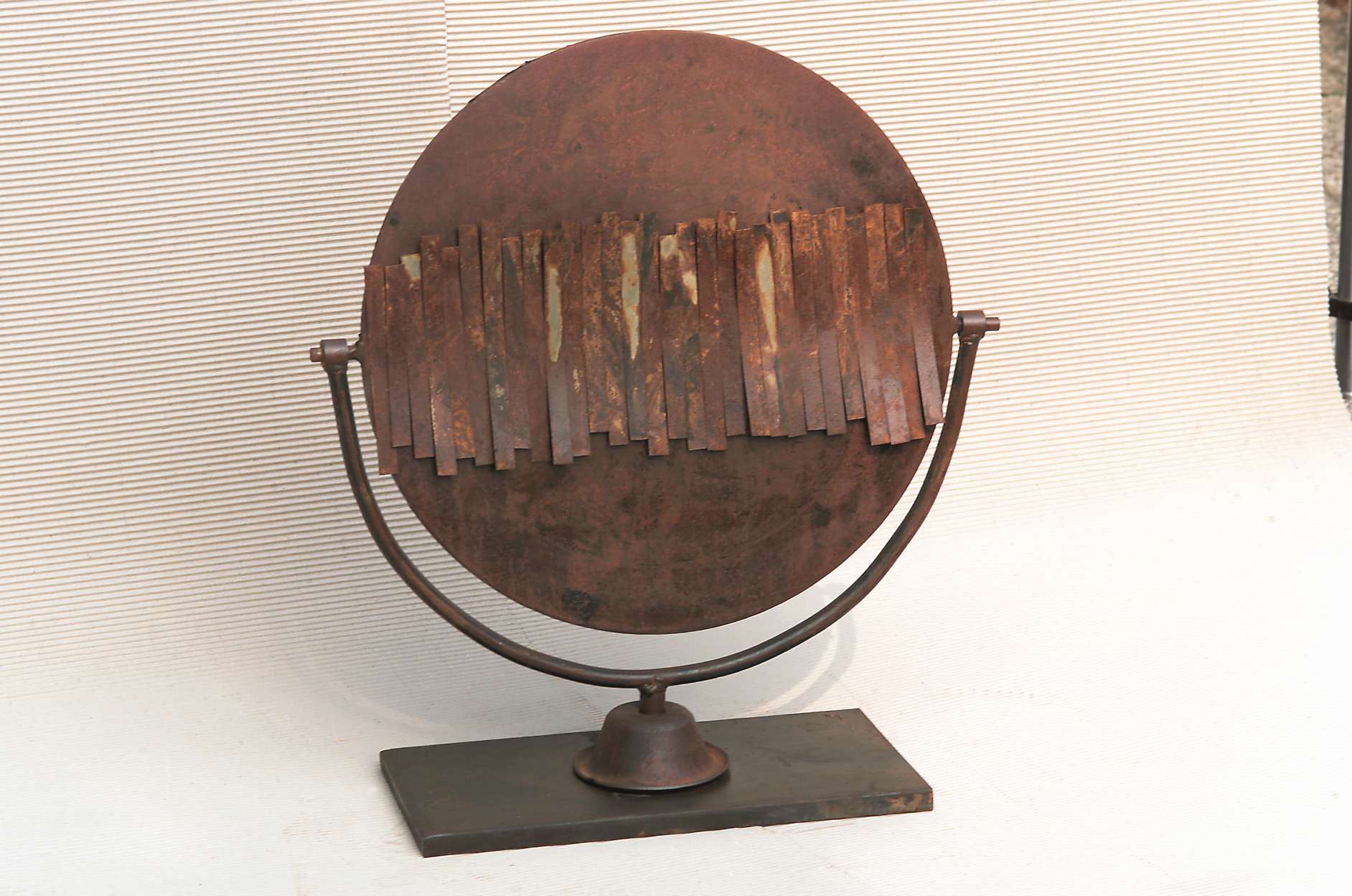
I Setacci / Specchio
11 novembre 2004
The ability to combine geometry with life is striking in Ievolella's work. It is only apparently a question of style, because reconciling the order of logic and the disorder of history is not just a formal problem. In any case, a few succeeded. Of course, it has succeeded poets like Gadda, who speaks of the "ellipses of our desperate pain", masterfully bringing together physics and psychology. Instead, for many artists, even great ones, geometry and existence have remained distinct, alien. It is known that Mondrian, one of the greatest interpreters of orthogonality in modern art, hated natural light, he painted only with electric light and in his studio, which was in the middle of entire fields of tulips, he kept a single flower: of plastic. Everything that was nature, and therefore life, was carefully kept out of his studio and his art. The opposite happens in Ievolella's works. The geometric plant, it is true, supports and governs every composition. Squares, rectangles, lines, circles appear in his works, indeed they oversee their physiognomy. There is no single subject or element of the installation in which the presence of the geometry is not felt. However, this presence is embodied in a world of simulacra, or objects of use, in a family of elements, in short, which carry with them the memory of a daily habit. The memory of life, in fact.
The scent, the fragrance, but also the providence and perishable nature of existence are captured primarily in a deliberate approximation. Ievolella does not act as a surveyor, as a designer, as an engineer. It moves from shapes that are around us and turns them into artistic elements. In his works, the reality of matter acts overwhelmingly, with its impurities, its residues, its direct attachment to concreteness. In fact, the geometry of Ievolella's sculptures does not refer, as in the great period of European rationalism and concretism of the first half of the century, to a Platonic, hyperuranic philosophy. It does not allude to a perfect eidos that is beyond things and at some point will enter the flow of existence. On the contrary, we are faced with a research that feels strongly (Aristotelian, one might say: and after all, for an artist who works in Padua, that is, in the city where one of the schools of thought most faithful to the Stagirita was based, 'adjective there can also be) the value of life lived of what surrounds us. In the forms sculpted by Ievolella you can feel the wear of time, the passing of minutes, hours, seasons that settles on the skin of things, modifies and corrodes them. Here, on a precariously balanced shelf, a long-touched vase and a military blanket stand out against a metal wall. Here is a table prepared for mysterious diners, which we will never know. Here, again, is another table, both worn and precious, goldsmith and waste material, which arouses the same feeling of expectation as furniture in the De Chirico valley. Finally, here is a forest of lines and a thicket of impenetrable metal grasses. In the alchemy of Ievolella a world of residues, of disabled tools, of traces and footprints of an elsewhere is recreated that we find it hard to recognize. Maybe they are objects from a previous life, memories of some dream that unexpectedly materialized in front of us.
If these works were to be dated, regardless of stylistic considerations, and the coherence that binds the various phases of the artist's research, we would have difficulty in ascribing them to a specific date. Because, more than a chronological time, they are marked by the patina of time: the one that according to Rilke is the most beautiful color a sculpture can have.
